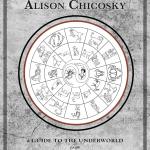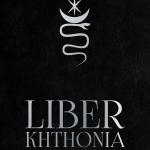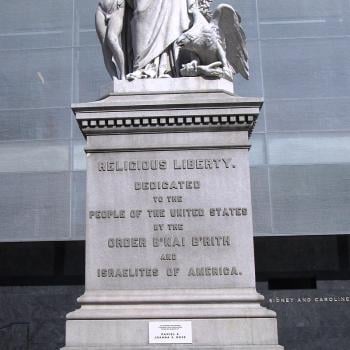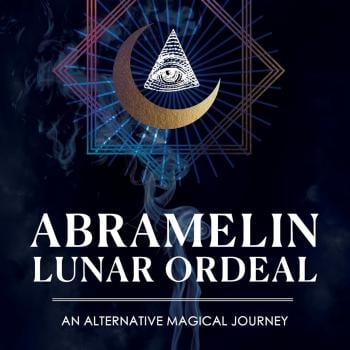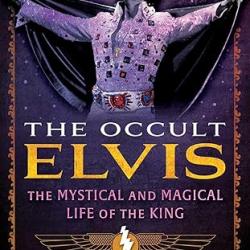Review of Sacramental Theurgy for Witches: Advanced Liturgy Revealed by Frater Barrabbas Tiresius.
Sacramental Theurgy for Witches presents a magical system where witches who are already working with gods and goddesses, are provided with methods and techniques to take those relationships to a deeper level. These techniques will enable witches to directly converse with ancient deities, and “project their magical powers into the material world to make changes, to aid, heal, and protect others. It is doing the work of the Gods and Goddesses in this world, acting as an agent for distributing their blessings, sacraments, and magical transformations.”
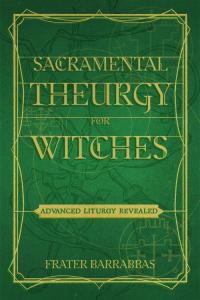
Frater Barrabbas has spent decades developing of the methods and techniques in Sacramental Theurgy for Witches. His approach at first glance appears confusing, but on reflection makes perfect sense. He has appropriated rituals and practices from the Catholic Church and combined them with modern Witchcraft. It should be noted, that in its early days, the Catholic Church developed a form of magical liturgy derived from the practices of Neoplatonic philosophers as well as the Pagan magicians who came before them. The magical liturgy is to be found within the Tridentine Mass.
Frater Barrabbas states that “The Catholic church had discarded the Tridentine Mass and its associated rites as being too magical back during Vatican II. I have resurrected and transformed them to the service of Witchcraft liturgy and magic. I have appropriated what is no longer sanctioned or used by the Catholic church, so my borrowing of ritual patterns is allowable but likely seen as illicit and controversial.”
In a nutshell, just as the Catholic Church incorporated elements of Neoplatonic theurgy into its liturgy, Frater Barrabbas is liberating those elements and incorporating them into with modern Witchcraft, which is a very appropriate vessel.
As an aside, it should be noted that there is a very prominent precedent for Frater Barrabbas’ work. Aleister Crowley based Liber XV, the Gnostic Mass, on the Liturgy of St. Basil of the Russian Orthodox Church as well as the Mass of the Roman Catholic Church. Crowley’s Gnostic Mass is the central rite of Ordo Templi Orientis and its ecclesiastical arm, Ecclesia Gnostica Catholica, and is performed regularly to this day.
Frater Barrabbas points out that around the fifteenth century, “Witchcraft, at that time, was mostly a system of magic that may have given a tacit acknowledgment to the fairies, earth-spirits, demons, or diabolic intermediaries who gave them their powers; but it was mostly a magical methodology divorced from any kind of religious beliefs or practices.”
Medieval witches were probably much more aware of the gods and spirits around them. They didn’t have modern day distractions and were attuned to the cycles of the seasons, the sun and moon.
The religious aspects of Witchcraft religion began to be developed in the twentieth century. Witchcraft magic encompasses “the idea of engaging with the Pagan-based Witchcraft Deities to intercede and to make changes in the material world through the artifice of votive offerings, prayer, meditation, communion, sacrifice, and godhead assumption.“ Mixing Witchcraft magic with Witchcraft religion is “to formulate a kind of Witchcraft-based theurgy.”
Witchcraft Theurgy differs from modern Witchcraft by being “a natural progression from the basic religious practices that consist of votive offerings, godhead assumption, sacramentation, and communion. When the salt and water are charged, blessed, and mixed, then a sacrament is produced which is lustral water. Anointing oils used in initiation and the Great Rite are typically blessed before being used, as are the magical tools of wand and athame. Some Witches offer food and drink to their Deities and burn candles and incense as offerings to them.”
Frater Barrabbas goes on to explain:
“Witchcraft Theurgy can be divided into two basic categories: sacramental magic and the mysteries of transformation. In both of these categories, the Deities are engaged and their impact enlarged so that the magic performed is done explicitly through them. This would require not only defining the Deities in greater intimate detail than what is typical in a coven or group, but it would also require expanding the scope of Deities so that the world surrounding these Witches would be filled with Deities representing the cosmic, regional, and local geographic domain of the covenstead.”
Frater Barrabbas again points out that ancient pagans were far more aware of the deities and spirits around them, and incorporates this awareness into his system:
“If the world becomes a place of sacramentation then it must also logically be filled with Deities so that everything within it becomes holy and imbued with spirit. This requires a shift in perspective for modern Witches, but it is one that is more compelling and logical within the context of a Pagan and polytheistic perspective. It begins with the Deity within one (the Familiar Spirit) and expands to include all of the natural world, including the underworld. Recognizing these many Deities and properly worshiping at least some of them will give the Witch an endless number of spiritual allies to call upon to help them with their theurgical and magical workings.”
Frater Barrabbas provides witches with a number of sacramental magic and magical Mystery rites, taking them on a journey where religious rites will take on a powerful and expanded magical capability. The starting point is godhead assumption:
“One of the most beautiful and amazing experiences that a modern Witch or Pagan can have is experiencing the core liturgical rite of Drawing Down the Moon, the Sun, or the Horned God. It is, in fact, a godhead assumption that is often a central part of the religious liturgy of modern Pagan-based religions. All things flow out from it that vitalize, sacralize, and substantiate the tenets of these modern religions.”
Frater Barrabbas includes a statue animation ritual which is taken from the system outlined in one of his previous books, Talismanic Magic for Witches. This section will be of interest non-witches who practice theurgy.
“One of the most magical acts of theurgy as reported by the legends about the Neoplatonic philosophers was the animation of a statue or bust with a Deity. It was considered one of the more basic types of magic that a philosopher could attempt. It was amazing because the actual methods of performing this kind of Neoplatonic magic were secrets that have been lost over the centuries, although there are fragments and hints in how it was done … “
As an aside, Frater Barrabbas and I first met in 2011. One advantage which I have over most other readers is that I have also met a number of people who he refers to, namely Steven Posch, as well as the Baphomet Bunch, including Keith Ward. While I was favorably impressed with all of them, I had not realized until now how significant they were to Frater Barrabbas in crafting his spiritual path.
It is evident that Frater Barrabbas has synthesized a huge body of influences coming from numerous pantheons and spiritual traditions. There are copious footnotes allowing readers to investigate areas of interest in greater detail, as well as links to his other books. It’s very important to provide readers with suggestions for further growth.
All in all, Sacramental Theurgy for Witches Is an intermediate level text aimed at witches who have a good grasp of the basics and wish to supercharge their practices in order to take the “next natural and logical step forward.” I envisage a number of covens experimenting with this system to enhance their own curriculums. In addition, readers already practicing theurgy may well be interested to compare the approach outlined in this text with their own.
Tony Mierzwicki
Author of Hellenismos: Practicing Greek Polytheism Today and Graeco-Egyptian Magick: Everyday Empowerment.
https://www.amazon.com/Hellenismos-Practicing-Greek-Polytheism-Today/dp/0738725935
https://www.amazon.com/gp/product/1905713037/ref=dbs_a_def_rwt_bibl_vppi_i1

